The Leadership Team
The High Five Working Group Leadership Team is comprised of two co-chairs, one from Canada and one from the U.S., who are supported by two associate chairs, again one from Canada and one from the U.S. In addition, a current member of the Crown Managers Partnership (CMP) serves as a liaison between the Working Group and the CMP.
The Leadership Team is responsible for organizing and holding an in-person High Five Working Group Annual Meeting. They are also responsible for communicating with group members, and ensuring forward progress on working group goals and objectives as pursued by the working group’s subcommittees.
Leadership Team Members
Karl Anderson, US Co-Chair, US Forest Service - Flathead National Forest
Randy Moody, Canada Co-Chair, Whitebark Pine Ecosystem Foundation of Canada
Rebecca Lawrence, US Associate Co-Chair, Glacier National Park
Rob Sissons, Canada Associate Co-Chair, Parks Canada
Linh Hoang, Crown Managers Partnership Liaison, US Forest Service Region 1
SUBCOMMITTEES
Fire Management Subcommittee
Lead: TBD
Loss Mitigation Subcommittee
Lead: Randy Moody, Whitebark Pine Ecosystem Foundation of Canada
Inventory and Monitoring Subcommittee
Lead: TBD
Restoration Strategy and Action Plan Subcommittee
Leads: Robert Sissions, Waterton Lakes National Park & Michael Murray, British Columbia Forest Service
Protected Area Restoration Strategy Subcommittee
Lead: Anne Carlson, The Wilderness Society
Implementation Strategy Subcommittee
Lead: Karl Anderson, US Forest Service
Fire Management Subcommittee
Past Subcommittee Lead: Dr. Robert Keane, Rocky Mountain Research Station
Fire has both positive and negative implications for whitebark and limber pine. Regeneration of these species is closely linked to newly burned areas, and fire is important for removing competitors. However, higher-intensity fires can kill five-needle pines, which poses a threat, particularly to important individuals (e.g. Plus trees, reproductively mature trees) and stands (e.g. climax stands). Wildland fire use and prescribed fire are important restoration tools, particularly in the Crown given anticipated increases in productivity (leading to increased competition) and increases in the size and intensity of fires as a result of climate change.
In June, 2017, the subcommittee issued “Guidelines and Best Practices for Managing Fire in Whitebark Pine Stands in the Crown of the Continent,” which details a fire management strategy for facilitating the restoration of whitebark pine on subalpine landscapes of the Crown of the Continent.
Loss Mitigation Subcommittee
Subcommittee Lead: Randy Moody, Whitebark Pine Ecosystem Foundation of Canada
While five-needle pine species are not targeted for harvest in the Crown, industrial development does lead to the loss and degradation of whitebark and limber pine. Where mitigation is required, it is typically done ‘on-site’ of the industrial footprint, which may or may not be the most effective way to mitigate for impact. This subcommittee is focused on identifying best management practices for industrial or other use to effectively mitigate for and advance the conservation and restoration goals for imperiled whitebark and limber pine.
In July 2017, the subcommittee completed a draft “Beneficial Management Practices for Whitebark and Limber Pine” guidance document. This document is currently in review and comments are welcome and appreciated. Check back here for final release of this document.
Inventory and Monitoring Subcommittee
Past Subcommittee Lead: Gregg DeNitto, US Forest Service, Region 1
A clear and detailed understanding of where whitebark pine and limber pine occur across the Crown, as well as their condition (tracked through time), is crucial to inform an effective landscape-scale restoration action plan. Currently, this knowledge is fragmented: some jurisdictions have good occurrence and condition data, and some, including private lands, have nearly none at all. Data is better for whitebark, but very limited for low-elevation limber pine. This subcommittee is focused on developing a Crown-wide shared database of stand-level occurrence data as well as restoration actions.
This subcommittee has developed predictive distribution modeling for whitebark pine and limber pine for the Crown of the Continent Ecosystem. In September 2017, this subcommittee also developed a white paper to guide the High Five Working Group in thinking about and developing a common database.
Crown-Scale Restoration Strategy Subcommittee
Subcommittee Leads: Robert Sissons, Waterton Lakes National Park & Michael Murray, British Columbia Forest Service
Whitebark and limber pine are in peril, and securing these species ability to persist across the Crown (and throughout their range) will require a concentrated and coordinated set of restoration actions. In 2021, this subcommittee completed a Crown-scale Recovery Plan that prioritizes areas for conservation and restoration. The summary report is not yet available, but you can listen to technical team lead, Melissa Jenkins, and GIS expert, Joe Fortier, explain the process here.
Protected Area Restoration Strategy Subcommittee
Subcommittee Lead: Dr. Anne Carlson, The Wilderness Society
A large amount of whitebark pine occurs in highly protected areas (in the U.S., approximately 50% of whitebark pine occurs in designated Wilderness areas). The protection level afforded to these areas can discourage or even prohibit certain restoration activities. This subcommittee is working to provide recommendations for a management framework that explicitly acknowledge the benefits and drawbacks of managing five-needle pine in highly protected areas.
Implementation Strategy Subcommittee
Subcommittee Lead: Karl Anderson, US Forest Service
With the 2021 completion of the Crown-scale restoration plan, it is now up to individual jurisdictions to use the data rich maps to plan for the management of whitebark and limber pine on the lands they steward. This subcommittee will ensure that managers are trained in how to use the Restoration Plan to create 10 year management plans. Futhermore, it will support on the ground restoration work by identify mechanisms for sharing resources (including people/teams, contracts for work, funds, seeds, and seedlings) and opportunities for new funding (e.g. through foundations/partnerships with NGOs, etc).


















